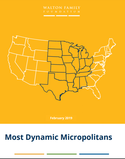“If it turns out that there is a God … the worst that you can say about him is that basically he’s an underachiever.”—Woody Allen
If you go into a Reform or Conservative temple, it’s likely that you will notice two things: The congregation is becoming smaller and older. Across the United States and Europe, Jewish congregations are aging at a rapid rate, a phenomenon increasingly common for mainstream religions across the high-income world. read more »





















